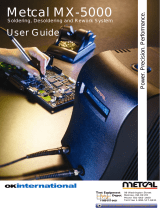
iii
Table of Contents
Preface ........................................................................................................v
Audience ................................................................................................................v
Organization ..........................................................................................................v
Documentation ......................................................................................................vi
Technical Support and Customer Service ............................................................vii
1 Introduction.................................................................................................... 1-1
PS Series Arrays and Groups.............................................................................. 1-1
Steps for Getting Started..................................................................................... 1-3
2 Hardware Installation................................................................................... 2-1
Protecting Hardware........................................................................................... 2-1
Network Requirements and Recommendations.................................................. 2-2
PS5000 Hardware Installation............................................................................ 2-3
Before You Begin to Install a PS5000......................................................... 2-3
PS5000 Environmental Requirements................................................... 2-4
PS5000 Shipping Box Contents and Required Hardware..................... 2-5
PS5000 Rack Mount Requirement........................................................ 2-7
Installing the PS5000 Hardware................................................................... 2-7
Step 1: Connect the PS5000 to Power................................................... 2-8
Step 2: Connect the PS5000 to the Network......................................... 2-9
Step 3: Turn on Power to the PS5000.................................................. 2-11
Step 4: Set Up a Serial Connection to the PS5000.............................. 2-11
PS5500 Hardware Installation.......................................................................... 2-12
Before You Begin to Install a PS5500....................................................... 2-12
PS5500 Environmental Requirements................................................. 2-13
PS5500 Shipping Box Contents and Required Hardware................... 2-14
PS5500 Rack Mount Requirement...................................................... 2-15
Installing the PS5500 Hardware................................................................. 2-16
Step 1: Connect the PS5500 to Power................................................. 2-16
Step 2: Connect the PS5500 to the Network....................................... 2-20
Step 3: Turn on Power to the PS5500.................................................. 2-22
Step 4: Set Up a Serial Connection to the PS5500.............................. 2-23
3 Software Configuration................................................................................. 3-1
Step 1: Choose a Configuration Method ............................................................ 3-1
Step 2: Collect Configuration Information......................................................... 3-2





















